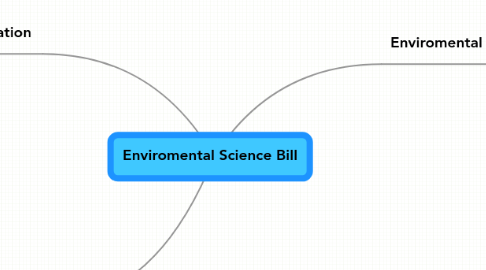
1. Human Creation
1.1. Urbanization
1.1.1. Impermiable
1.1.1.1. Runoff
1.1.1.2. Erosion
1.2. Water pollution
1.2.1. Point Source
1.2.2. Non-Point Source
1.2.2.1. Runoff
1.2.3. Organic
1.2.4. Inorganic
1.3. Water Purification
1.3.1. Desalination
2. Natural Recources
2.1. Renewable Resources
2.2. Non-Renewable Resources
3. Enviromental Classifications
3.1. Organism
3.2. Population
3.2.1. Population Growth
3.2.1.1. Exponential Growth
3.2.1.2. S Curve
3.2.1.3. J Curve
3.2.2. Population Growth rate
3.3. Community
3.3.1. Food Chain
3.3.1.1. Trophic Level
3.3.1.1.1. Producers
3.3.1.1.2. Primary Consumer
3.3.1.1.3. Secondary Consumer
3.3.1.1.4. Tertiary Consumer
3.3.2. Ecological Succession
3.3.2.1. Primary Succession
3.3.2.2. Secondary Succession
3.3.2.3. Pioneer Species
3.3.2.4. Climax Community
3.3.3. Food Web
3.3.3.1. Producers
3.3.3.2. Consumer
3.3.3.3. Decomposer
3.4. Ecosystem
3.4.1. Biotic Factors
3.4.1.1. Indicator Species
3.4.1.2. Threatened Species
3.4.1.3. Endangered Species
3.4.1.4. Biodversity
3.4.1.4.1. Genetic Biodiversity
3.4.1.4.2. Species Biodiversity
3.4.1.4.3. Ecosystem Biodiversity
3.4.1.4.4. Hot Spots
3.4.2. Abiotic Factors
3.4.2.1. Limiting Factors
3.4.2.2. Carrying Capacity
3.4.2.3. Water Pollution
3.4.2.3.1. Point Source
3.4.2.3.2. Organic
3.4.2.3.3. Non-Point Source
3.4.2.3.4. Inorganic
3.4.2.4. Watershed
3.4.3. Shore
3.4.4. Marsh
3.4.5. Wetlands
3.4.6. Pond
3.4.7. Aquifers
3.5. Biome
3.5.1. Freshwater
3.5.2. Desert
3.5.3. Rainforest
3.5.4. Tundra
3.5.5. Temperate Decidious Forest
3.5.6. Coniferous Forest
3.5.7. Marine
3.5.8. Grassland/Savannah
